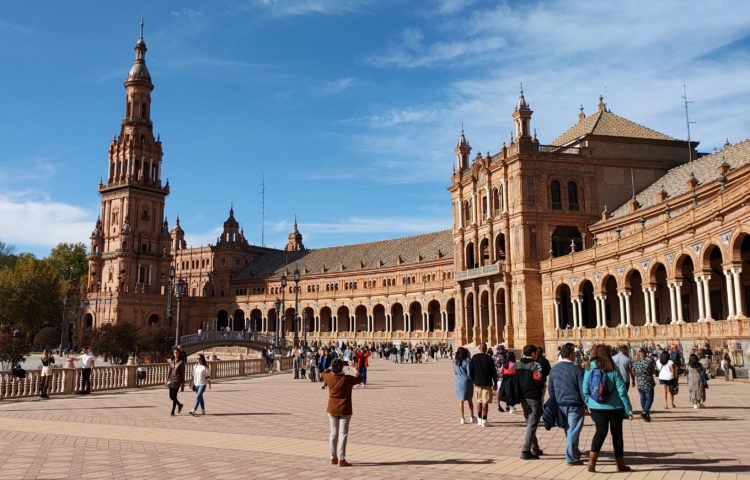If you want to know and experience the heart of Spanish tradition, you want to visit Seville. The home of flamenco and several Spanish monarchs through the centuries, Seville is full of history, monuments and a duende, or soul, that will captivate you.
With almost 700,000 inhabitants, Seville is the most populated city in Andalusia, in the south of Spain. It is the fourth most populated city in Spain. The old town of Seville is the biggest in Spain and 6th biggest in Europe. It is also one of the cities with a higher number of monuments and historical sites in Europe. It has lived through the Roman Empire, the Visigoth Kingdom and Al-Andalus (the Muslim-ruled area on the Iberian Peninsula) until its incorporation in the 13th century to the Crown of Castilla (which later, together with the Crown of Aragon, became the Kingdom of Spain). All of this towns have impregnated the streets of Seville with their soul and traditions.
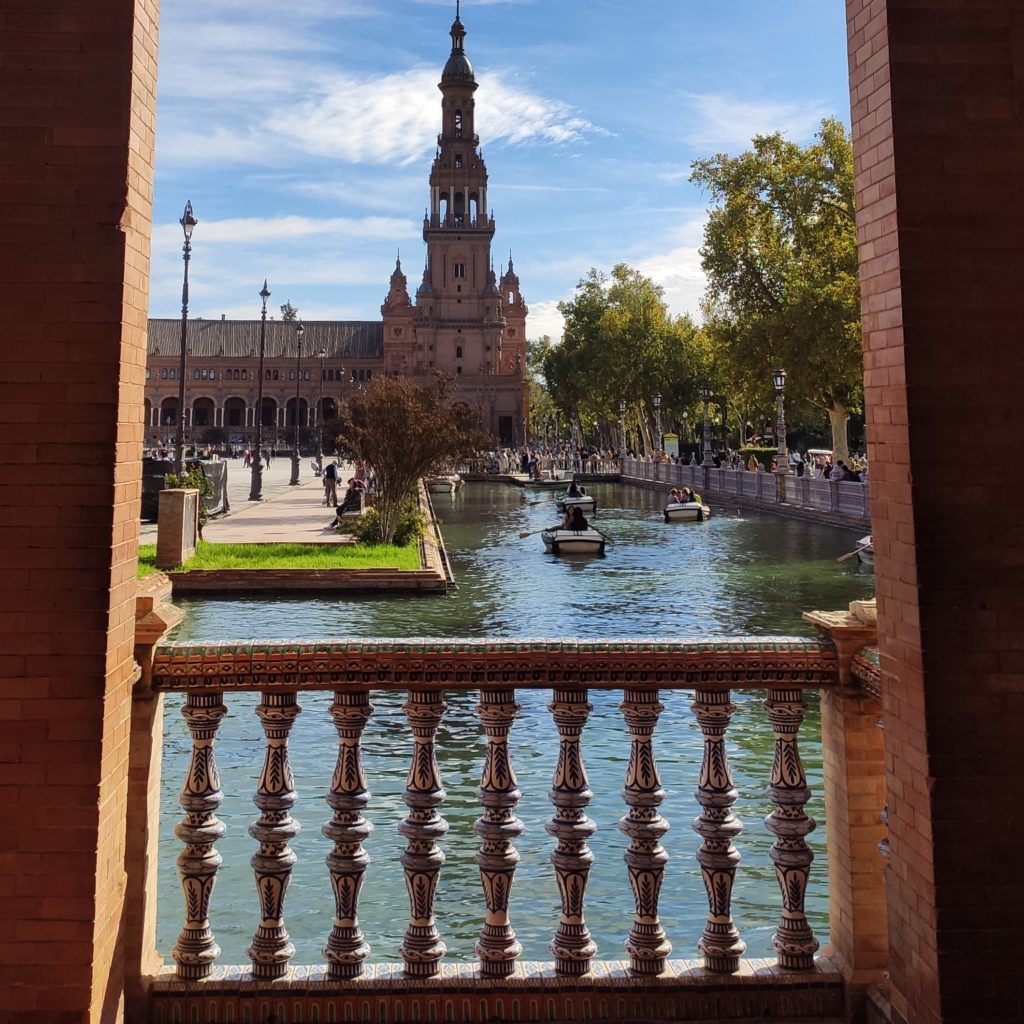
The river that crosses Seville, the Guadalquivir, is the only river in Spain that can be sailed. It allows the city to have the only interior port in the country. This has been incredibly important in the history of the city.
In this post you will find a list of the main attractions, neighbourhoods and experiences to visit Seville.
Contents
- Free tour
- Royal Alcazar of Seville
- Cathedral of Seville
- Giralda
- Neighbourhood of Triana
- Plaza de España and Maria Luisa Park
- General Archive of the Indies
- Torre de Oro
- Judería de Sevilla or Santa Cruz
- Tablao flamenco
- Visit Nao Victoria
- Basílica de la Macarena
- Cruise through the river Guadalquivir
- Party in Alfalfa
- Viewpoints over the city
- What not to do when you visit Seville
- Foodie recommendations for when you visit Seville
Free tour
If you have more than one day to spend in Seville a great option to start your exploring would be by joining a free tour. This will allow you to grasp the basics of the city and get some recommendations to complement the list of attractions you already know you want to visit.
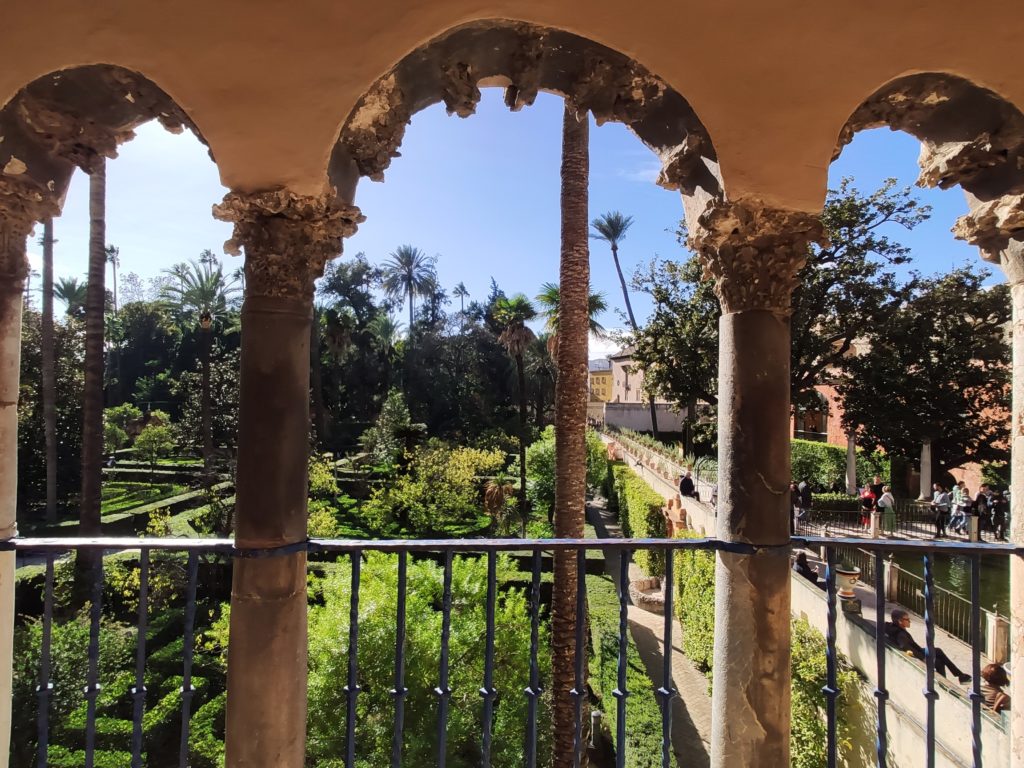
Some of the ones I find more interesting are:
- Free tour of Seville. Two-hour walking tours that will take you to the most important attractions in the historical site of the city. Other options are specific tours that cover several districts.
- Free tour in the neighbourhood of Triana: two-hours walking free tour in this emblematic part of Seville. The special personality and charm of this neighbourhood and flamenco will be the main characters of this experience.
- Mysteries and legends of the city. A type of free tour that is increasingly more popular around the globe, it will take you to the dark history of the city. There are several options available, such as night free tours or others targeted to families.
How does a free tour work? You can book without paying anything in advance but you do pay after the tour. The general rule of thumb is to give something around 5-10 euros. It will depend on the time length, the quality of the guide’s explanations…
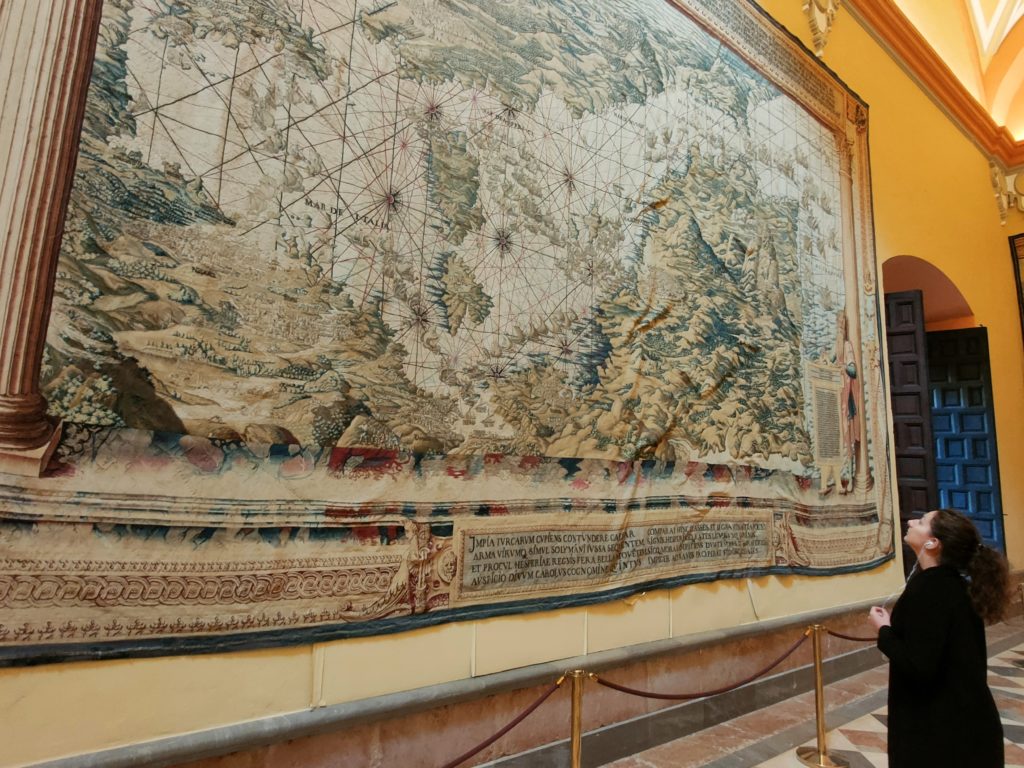
Royal Alcazar of Seville
Real Alcázar de Sevilla is a palace dating from the 11th century that is consistently the most visited monument of the city. It is a must when you visit Seville. Besides being one of the oldest in the whole world, its main attractive is that it has been used and influenced by the several different towns that have inhabited Sevilla. It has Arabic, Mudejar, gothic and baroque architecture.
Its gardens are another mandatory stop, with fountains with running water and exotic flora. It is a refreshment from the intensity of the city.
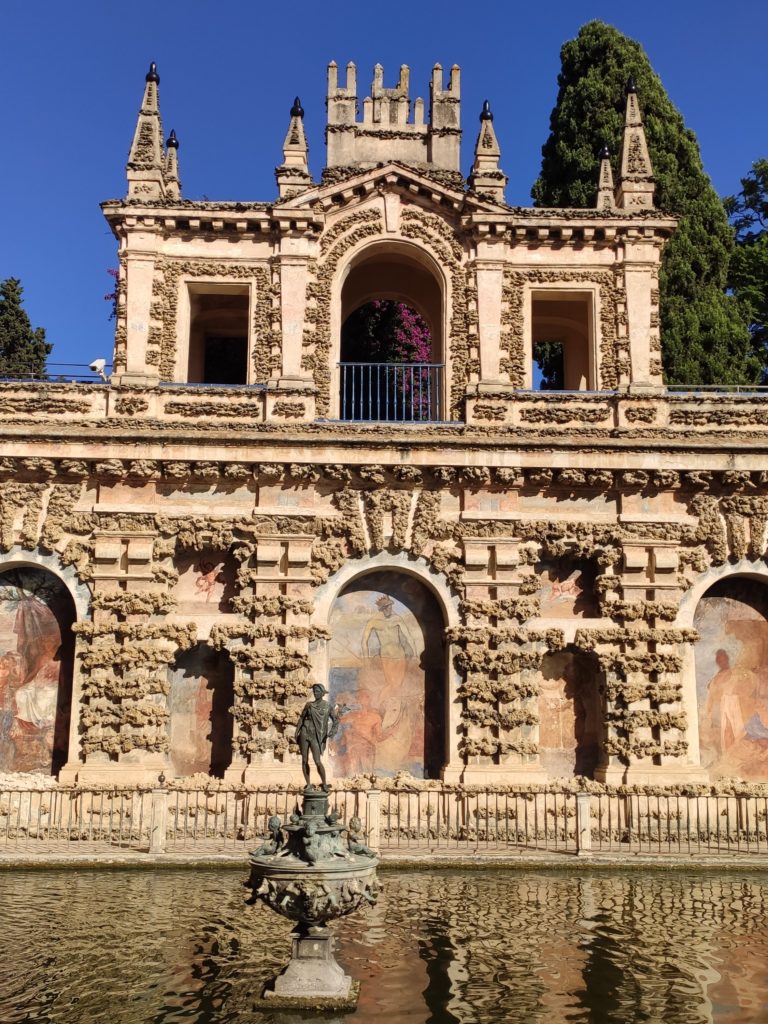
Some curiosities about Royal Alcazar are that it is still the official residency of the Spanish Royal Family when they visit Seville. It also is where the scenes of Dorne from Game of Thrones were filmed.
The ticket costs 14€ and it includes the palace and the gardens. If they include audio guides they cost 6€ extra per person. You can also join a guided tour for about 15€ per person. You can buy the tickets can at the queue or online.
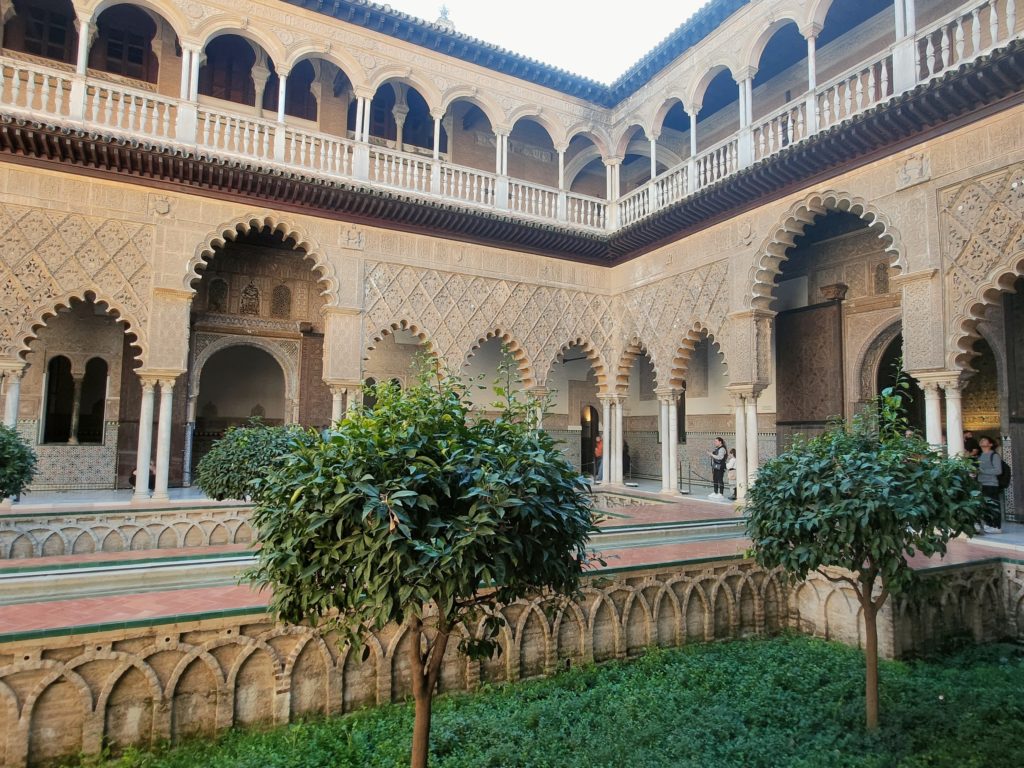
Cathedral of Seville
Third cathedral in size in the whole world (after San Pietro in the Vatican City and Saint Paul in London). First if we only consider Gothic Cathedrals. It is indeed one of the most spectacular cathedrals in Europe. If you ask me, the building itself is even more impressive than its interior.
The origin of this cathedral is a mosque that was built during the Muslim years. However, an earthquake on the 12th century damaged the major part of the mosque. It was demolished and rebuilt from 1402 to 1506, with several updates along the years. Currently, the only parts that are original from the Muslim years are El Patio de los Naranjos (The Orange Trees Garden) and the lowest two-thirds of the Giralda (the tower).

The tomb of Cristóbal Colón (Christopher Columbus) is located in the Cathedral of Seville. At least the 200g that still remain of the body after its tour to several Spanish colonies. Some monarchs of the antique Spanish Crown are also buried in the Cathedral.
Together with Royal Alcazar of Seville and the General Archive of the Indies, they constitute the UNESCO World Heritage Sites of the city.
The entry ticket can be bought online (which is recommended because it will allow you to avoid the queue) at the official website. The cost for adults is 11€ and it includes the visit to the Cathedral, the climb to the Giralda and the entry to the church of El Salvador. Alternatively, you can buy the visit with audio guide (16€ for adults) or guided tours. All options include some available discounts.
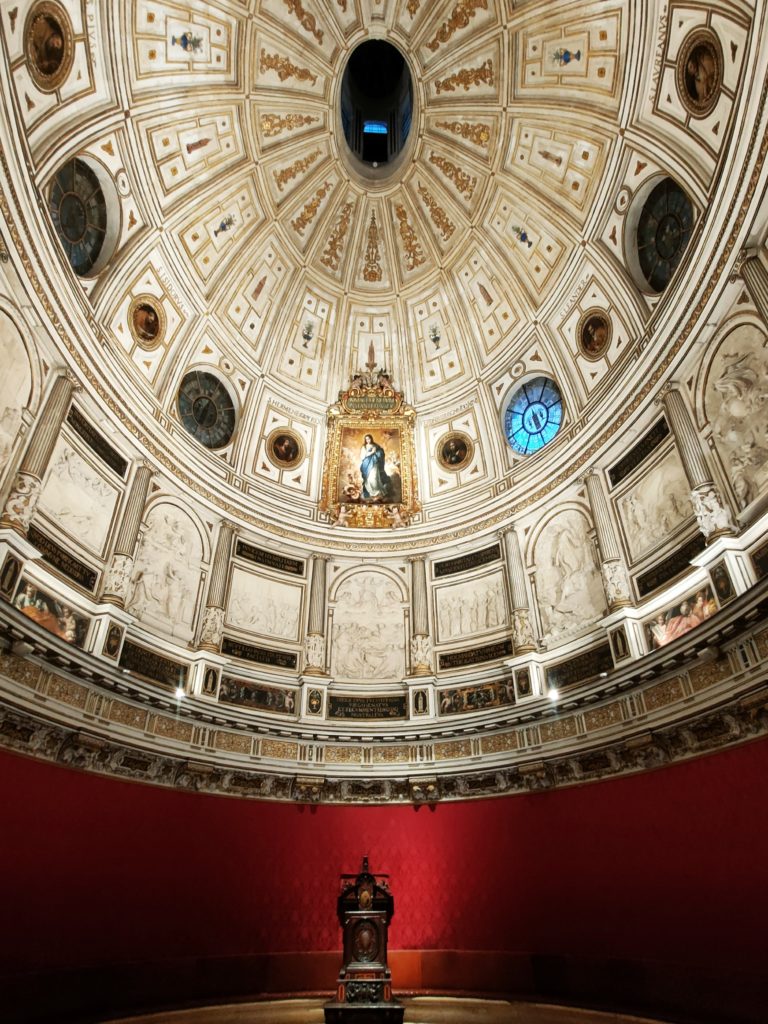
Giralda
The tower of Giralda is part of the Cathedral of Seville. With its 104.1m of altitude is one of the best viewpoints over the city. It makes it one of the most popular attractions to visit Seville. At the top of Giralda you can appreciate the monument Giraldillo, a symbol of faith and of the triumph of Christians over Muslims so many years ago.
Curiously enough, the ascend to Giralda is mainly done through ramps instead of stairs. The reason behind that is that as it was built as a mosque, the muezzin (the person who proclaims the call to the daily prayer five times per day) could climb in a donkey instead of walking.
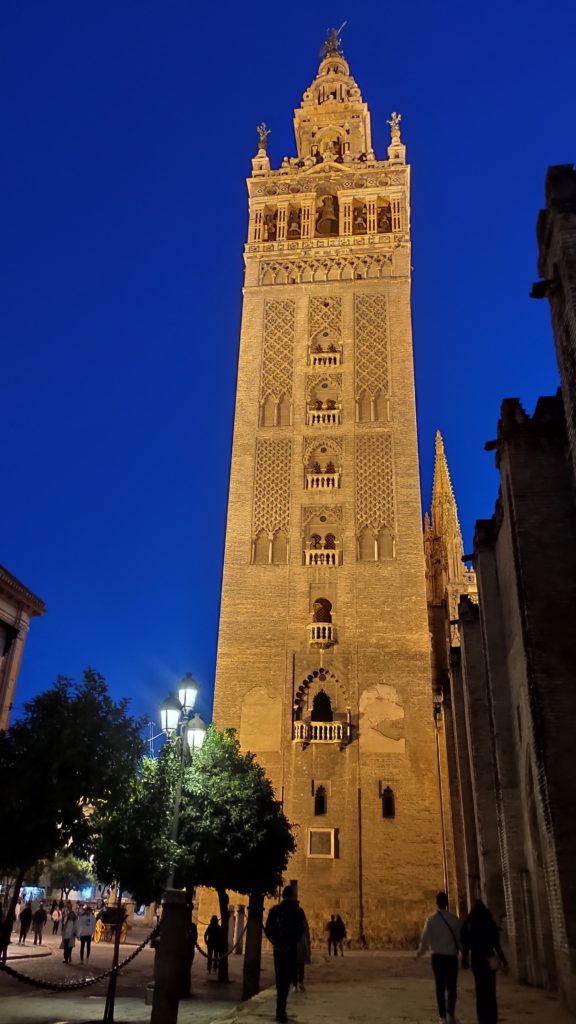
The entry ticket to Giralda can be bought along with the Cathedral of Seville one.
Neighbourhood of Triana
Located on the other side of the river Guadalquivir, the district of Triana is accessible through the bridge Isabel II. Traditionally the most important neighbourhood in Seville, it is now a working-class district. It is mostly famous for being the place where several famous bullfighters and flamenco dancers have been born.
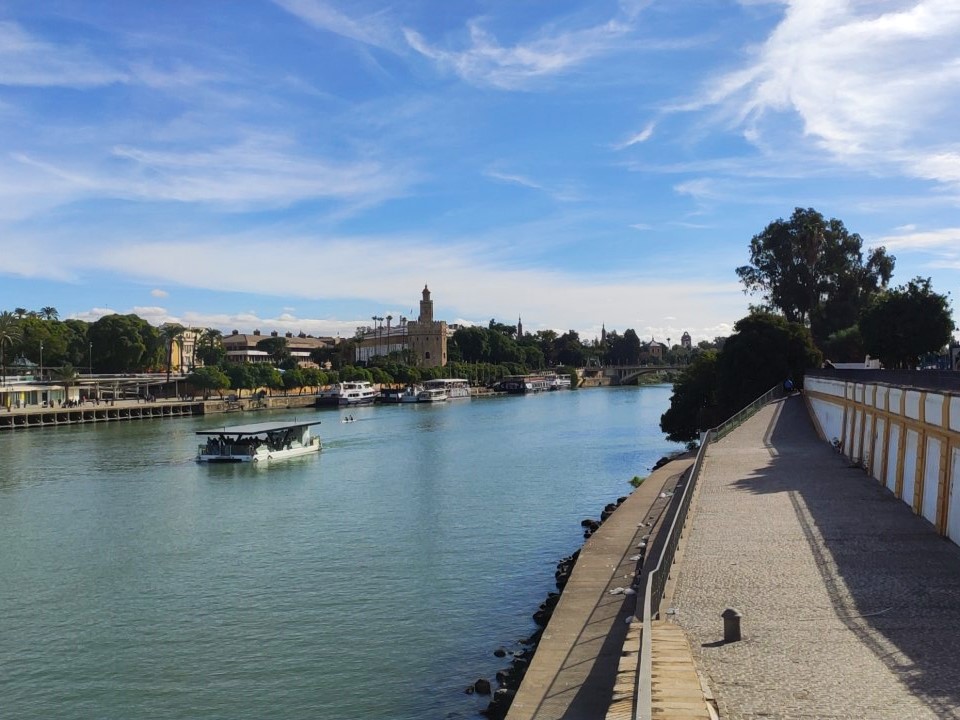
A colourful place to just wander when you visit Seville. It has some unexpectedly beautiful churches and some of the best tapas in town.
Plaza de España and Maria Luisa Park
Plaza de España was built in 1929 for the Iberoamerican Exposition. It features 48 benches and azulejos (decorative tiles) from all the provinces of Spain. The visit is free.

It is located in the Park of Maria Luisa. The park used to be part of the Royal Alcazar but was given to the city by the princess Maria Luisa in the 19th century. It is now surrounded by the buildings of all the countries that participated in the Iberoamerican Exposition. Most of these buildings are now occupied with some kind of cultural activities, although a few are the embassy in Seville for the corresponding country.
Maria Luisa Park is the biggest green area of the city, the perfect spot to relax around Plaza de España when you visit Seville. Do not miss the Isleta de los Pájaros.
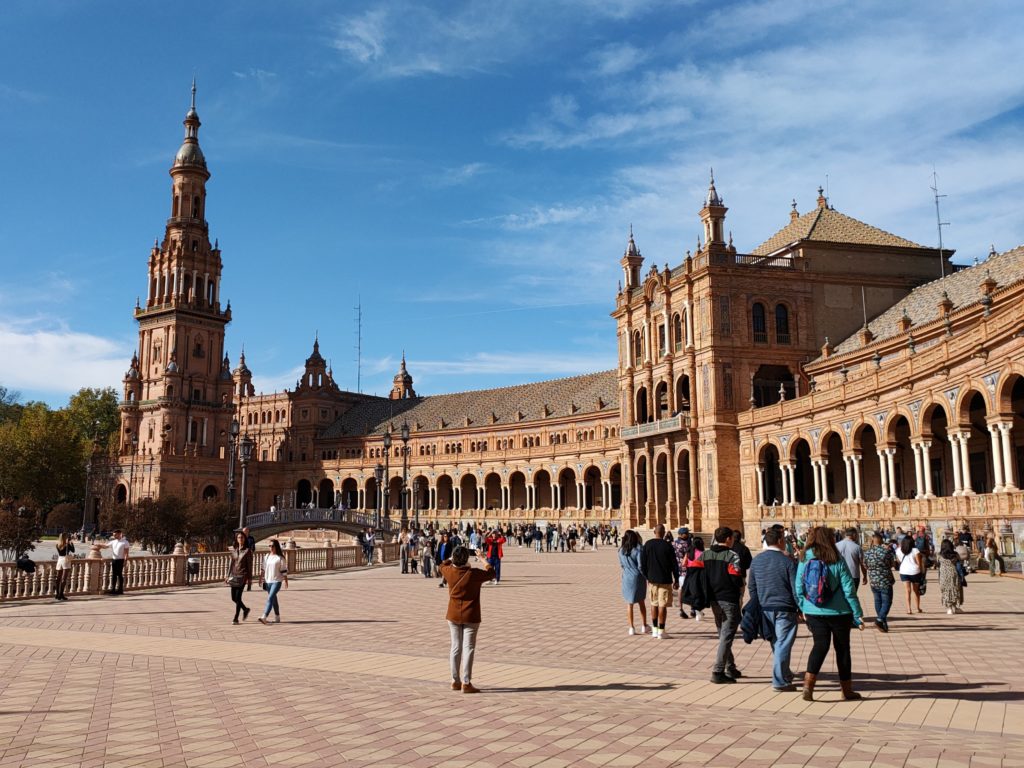
General Archive of the Indies
When commercial routes where established between America (the Indies at the time) and Spain, the port of Seville was given the monopoly to receive all navies coming with goods to trade. The building that is now the General Archives of the Indies was built in the 16th century to accommodate all those trades.
However, as time passed and ships were increasingly bigger and more abundant, the Port of Seville, being a fluvial one, became small and the monopoly was removed in favour of the maritime city of Cadiz. The building then was left vacant and unattended.
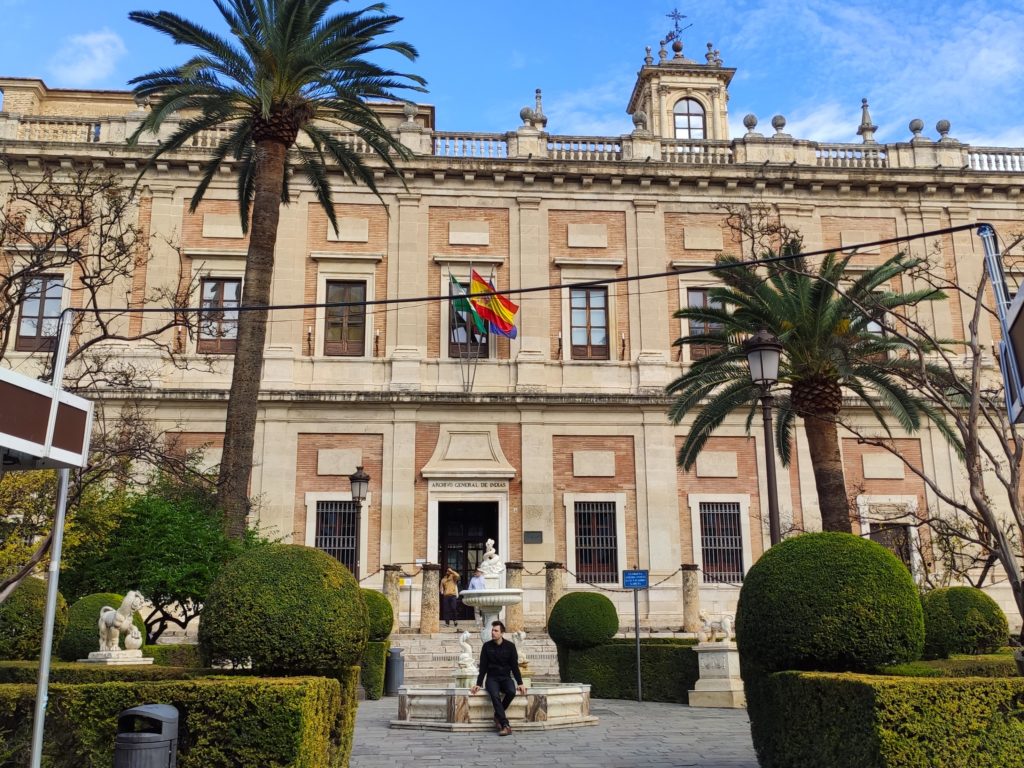
A while later, the King Carlos III thought that all the documents that were stored in that building were of some interest. Maps, trades registers or general documentation related to the Spanish Colonies and many more. They were not up to date and had only historical value. The building then became the General Archive of the Indies, inaugurated in 1785.
Besides the value of the documents, the architecture itself is very worth a visit. You can access for free but check the schedule, it closes relatively early.
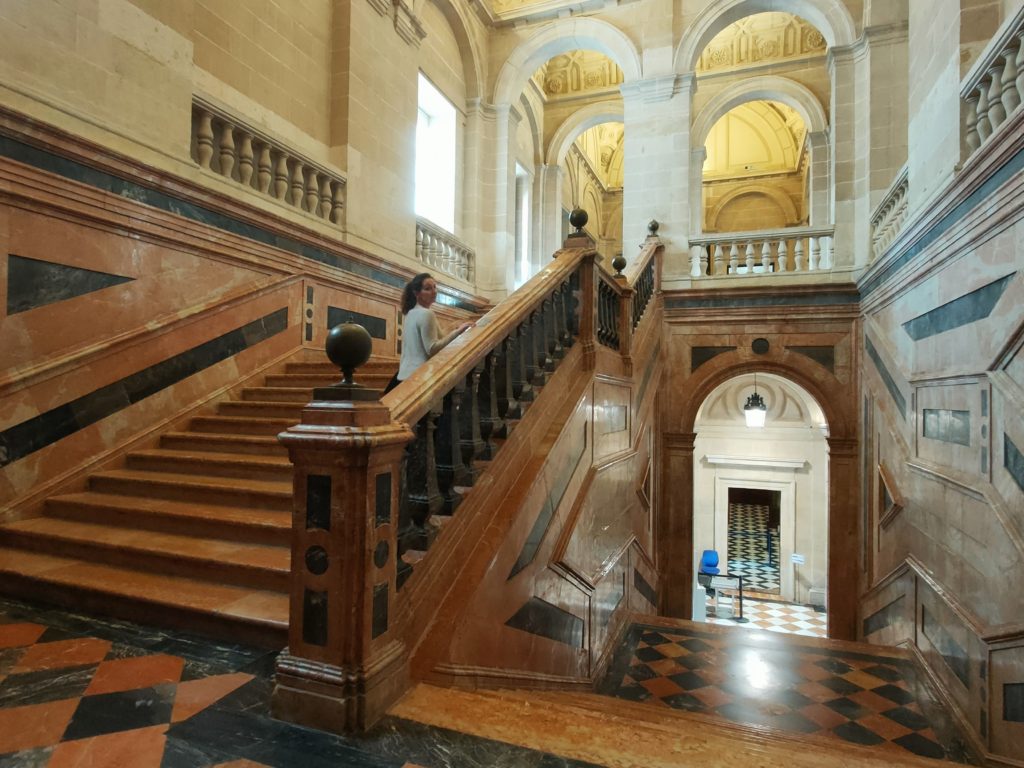
Torre de Oro
Next to the river Guadalquivir, Torre de Oro (the Golden Tower) owns its name to the shadow it projects over the river, particularly at sunset. Although other theories say that the gold from the Americas was stored there.
The entry ticket costs 3€.

Judería de Sevilla or Santa Cruz
The neigbhourhood of Santa Cruz was the fanciest in the times of King Alfonso 10th of Castilla, in the 13th century. At the time the region had very recently been recovered from the Muslims and the kingdom needed to Christianise the city. It mainly means they needed to build churches. As there was no money around to do so -apparently all had been spent on wars-, he made a treat with the Jews. They ought to pay for the churches, while he would give them the best neighbourhood in Seville. From then on, Santa Cruz has also been known as the Jewish neighbourhood (”judería” in Spanish).
The best way to explore Santa Cruz when you visit Seville is to forget about the navigation system on your phone. Get lost in its narrow pretty streets (some of them as narrow as 40cm wide!). There are plenty of artisanries and tapas to entertain you for a while.
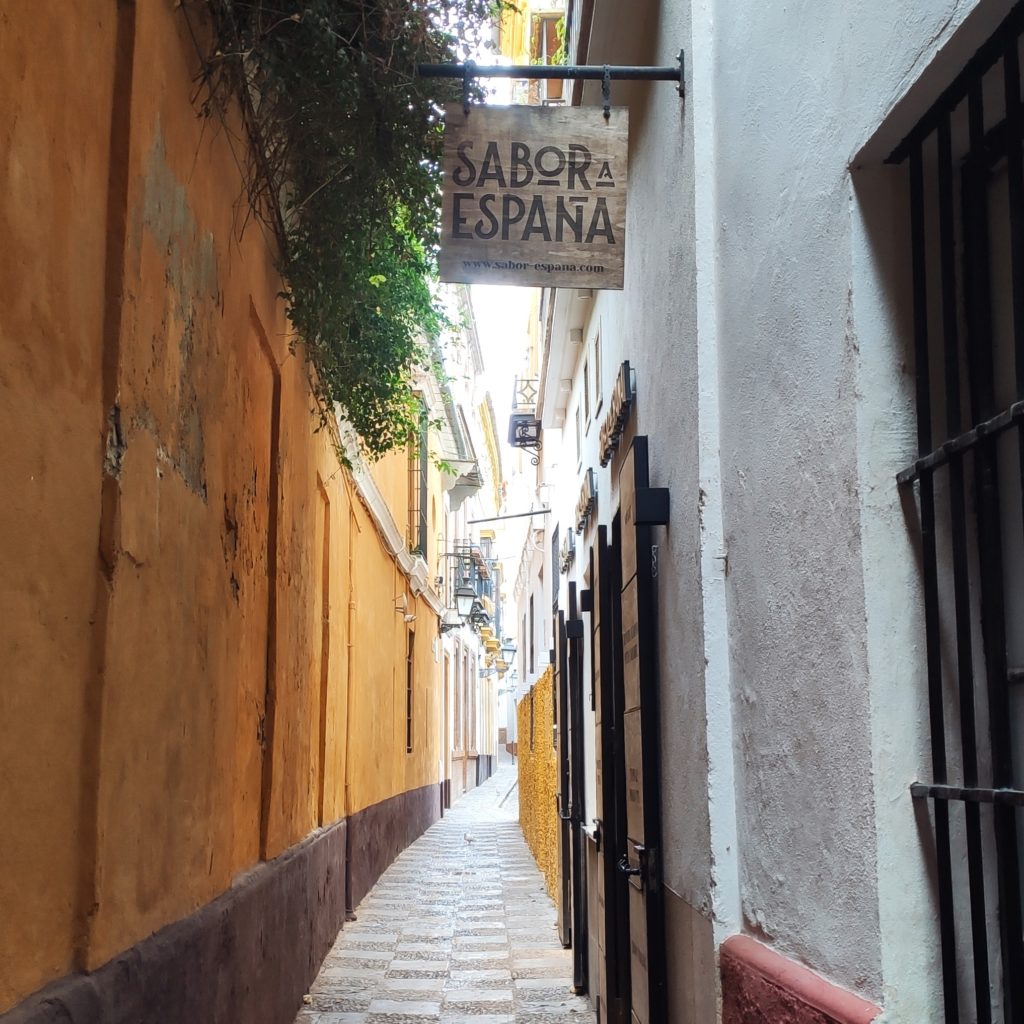
Tablao flamenco
Flamenco is the most popular traditional folkloric music in Spain, featuring the melodies, the dance and clothes. Its origin is disputed but it is fairly accepted that it was born in the region of Andalusia, in the south of Spain, from the union of the local traditions with the ones from the Romanies (gitanos), arriving from India in the 18th century.
The dance of flamenco was declared in 2010 an Intangible cultural heritage by UNESCO.
Seville is one of the places in Spain with more tradition with flamenco. It is therefore one of the best cities to enjoy a tablao flamenco (dance performance). One of the best neighbourhoods in the city to experience it is Triana, the heart of tradition in Seville.
Visit Nao Victoria
Nao Victoria is the -almost- exact recreation of the ship that was used from 1519 to 1522 to complete the first documented circumnavigation across the globe. Although at first it was planned as an itinerant exhibition, it will be established permanently in Seville.
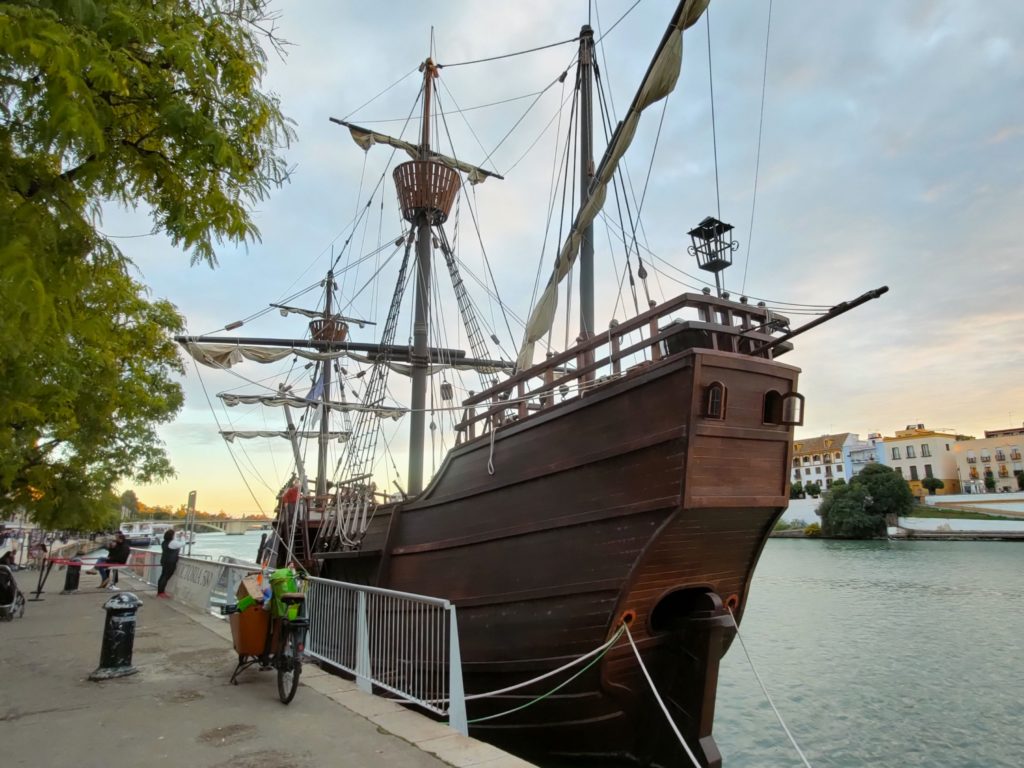
It is a curious visit that allows you to explore the conditions in which sailors worked and lived on the ship, with short explanations written in the walls.
The entry ticket for the ship costs 3€ at the entrance. It can be bought together with the museum ticket 20m from the ship for 6€. You can also get the tickets online, but you will need to pay extra fees and only can get the ones including the visit to the museum, so in this particular case I recommend you to just get there and buy your ticket.
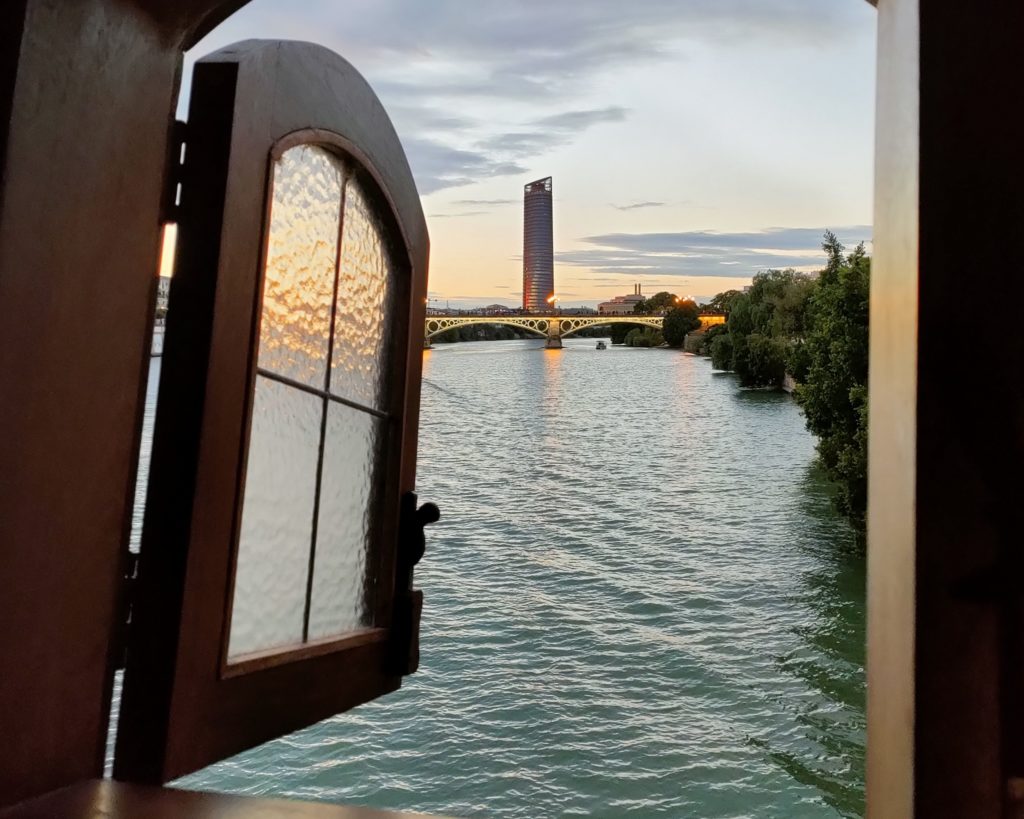
Basílica de la Macarena
One of the most important religious temples of Sevilla, if you are around the neighbourhood of Macarena do not hesitate to pay it a visit. Despite is recent construction (1941), the combination of white and gold in its façade is spectacular.
Cruise through the river Guadalquivir
For about 15€ per person, you can take a cruise in Seville that for an hour will navigate the Guadalquivir to show you the most interesting spots to see from there. The information is provided in several languages. If you book it for the evening around sunset, you will enjoy the views even more.
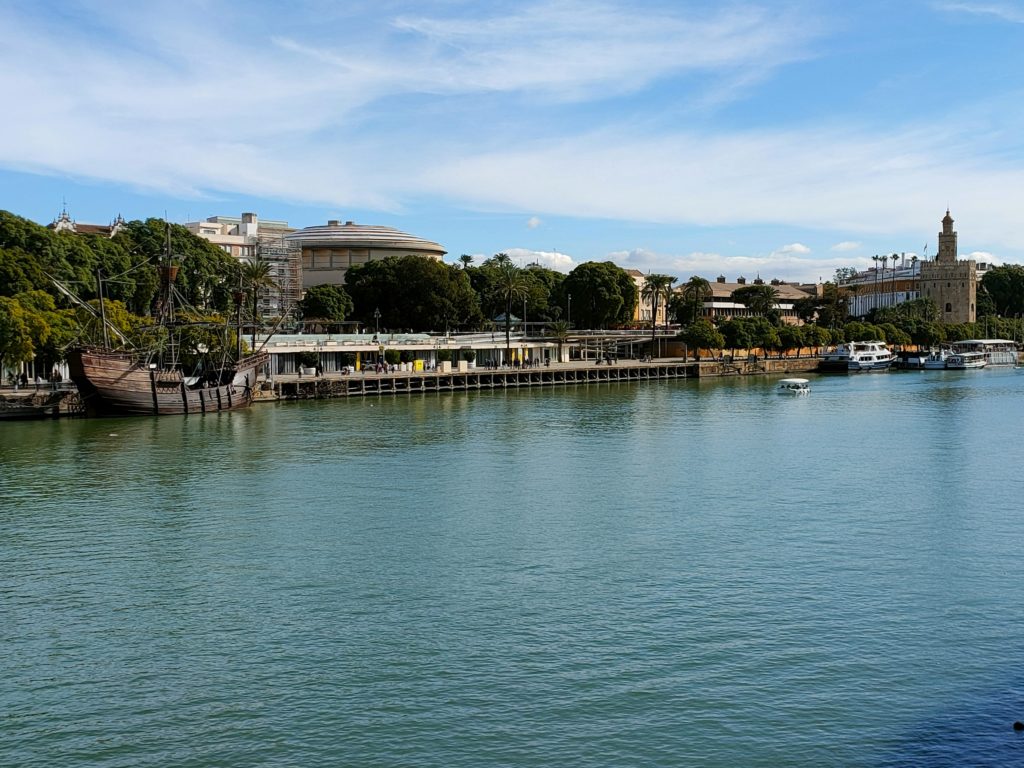
Although in my opinion it is not the most spectacular experience of the city, it will give you an hour of peace and rest while you still visit Seville. If you go at sunset, you will probably very much need that after the whole day of walking, so overall it is a good choice.
Party in Alfalfa
If you want to experience Seville’s night life, the neighbourhood of Alfalfa is the place to do that.
Viewpoints over the city
Apart from Giralda, there are several other spots that will offer you great views over the historical site of Seville:
- Torre Sevilla: a 180m high building (the highest and only skyscraper in Seville). From 11am to 7pm the ticket costs 8€. From 7pm to 1am it costs 16€ and it includes a consumption.
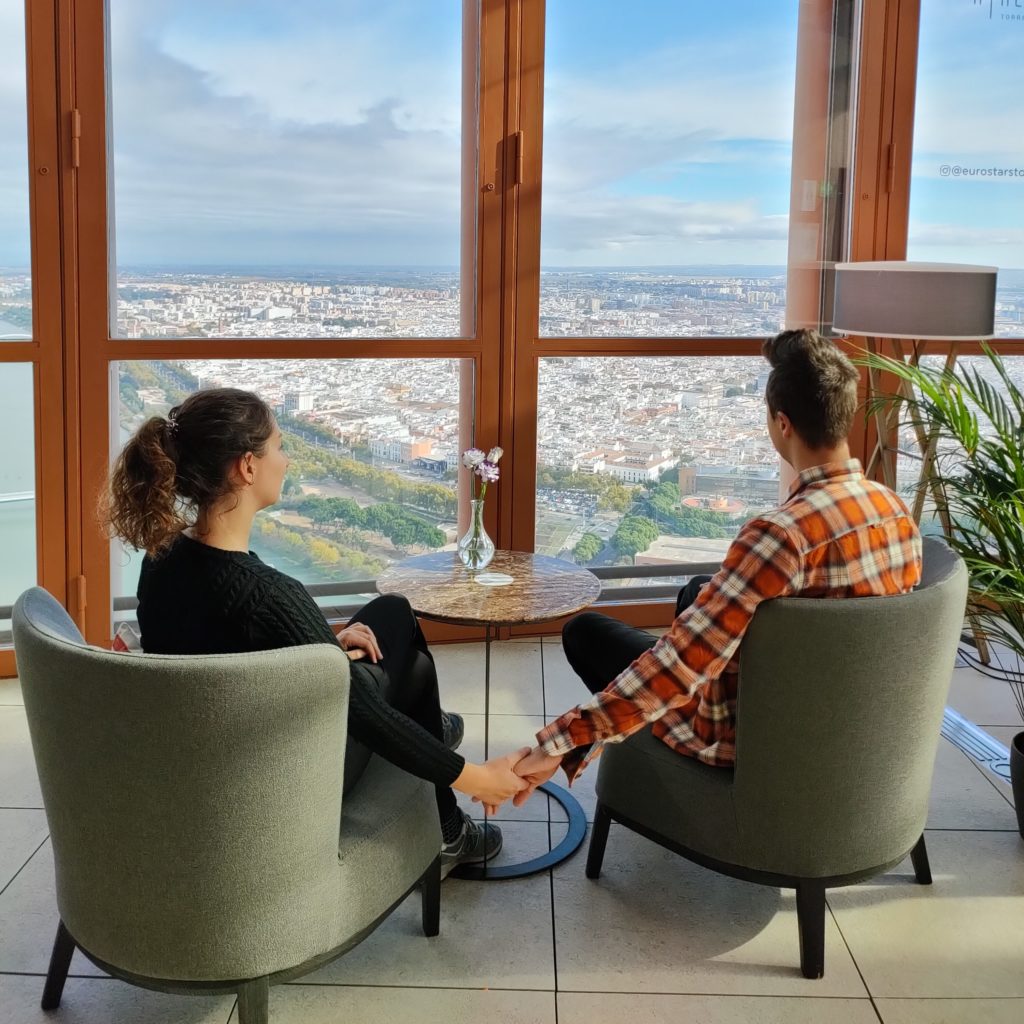
- Metropol Parasol: also known as “las Setas” (the mushrooms). It is a modern building with strange architecture with a platform from where you can oversee the city. It also offers light spectacles called “Aurora”. The entry ticket can be bought at their website (https://setasdesevilla.com/en/home) and costs 12€ (options with discounts available).
- El Corte Inglés Plaza del Duque: from the terrace of this shopping centre you’ll have panoramic views of Sevilla. The experience is even more spectacular at sunset.
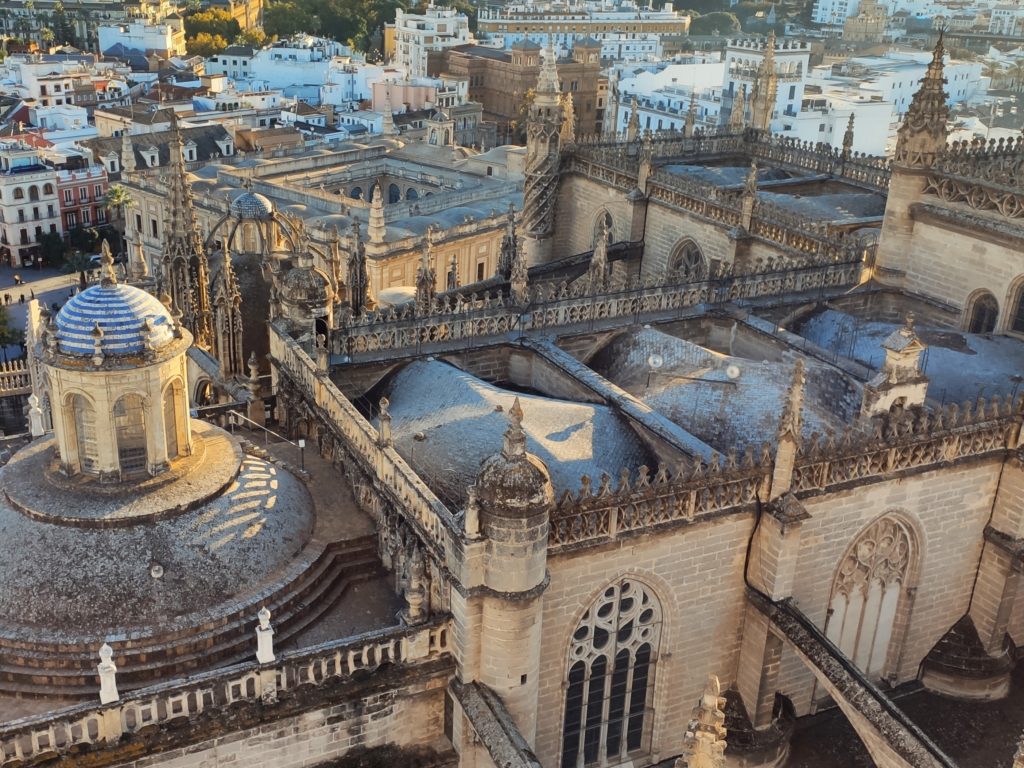
What not to do when you visit Seville
Do not hire a horse drawn carriage thus contributing to the tourism around animals. With some exceptions that cannot justify the whole practice, this industry relies on working the animals until reaching enough profit, with little consideration on the animal rights and wellbeing. Excess of weight, wounds, blows, lack of veterinary care or stress for dehydration or heat are common. So, you know, just don’t consider yourself above all that and have the empathy and consideration to care more about their suffering than a pretty picture.
Foodie recommendations for when you visit Seville
Eat all the tapas you can hold
Including serranito, the classical sandwich of the city.
A classic restaurant is Casa Ricardo (C/ Hernán Cortés, 2) and their croquetas de jamón (ham croquettes).
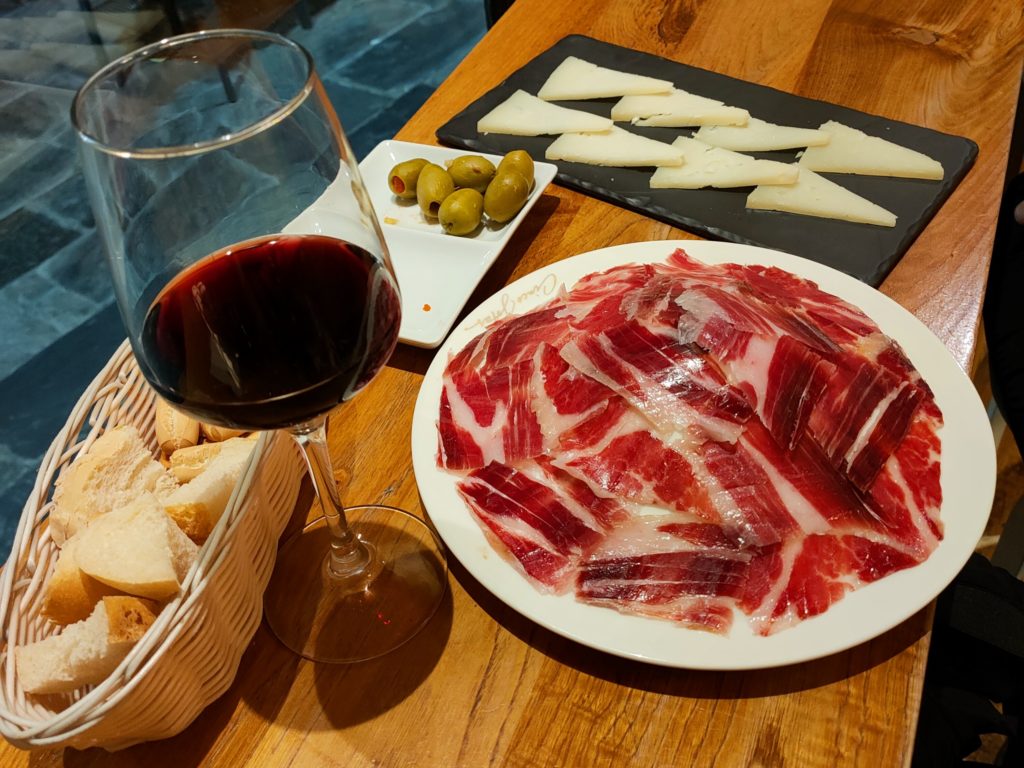
Taste “Vino de Naranja”
Vino de Naranja, or Orange’s Wine, is one of the traditional beverages of the city and when you are there you will surely understand why!
Seville is crowded with orange trees that were planted by the Muslims mainly for the fragrance of their flower azahar (orange blossom), so there’s plenty of oranges to work with.
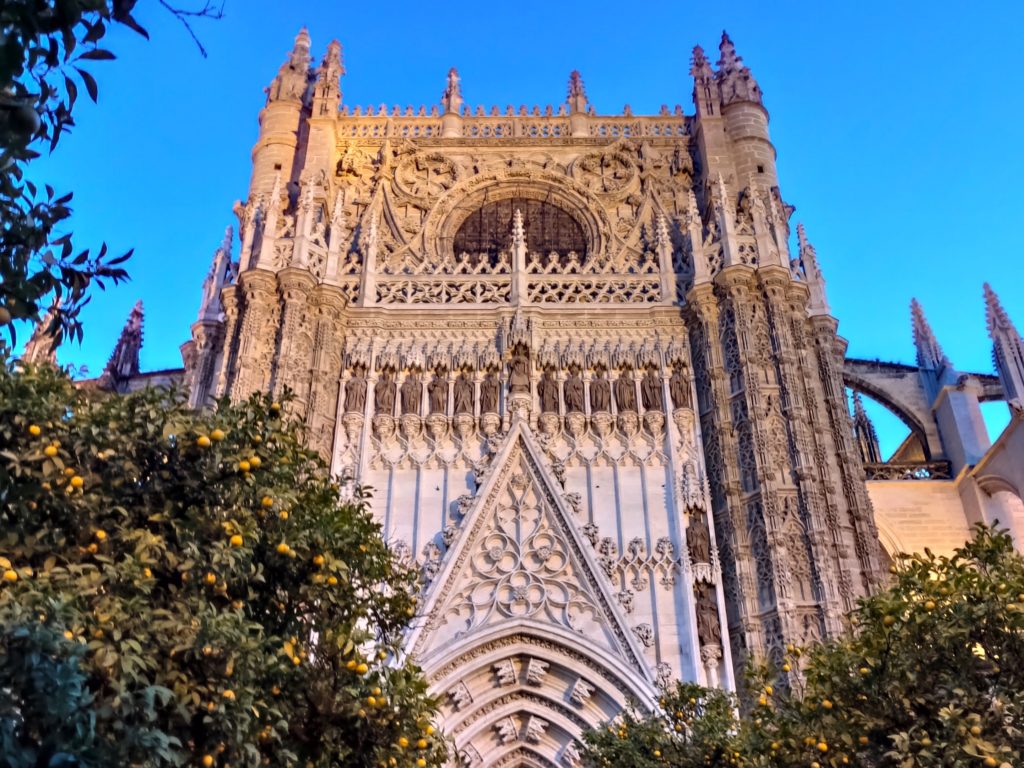
Vino de Naranja is fermented with orange peels and therefore gets an orange colour and sweet taste. A great spot to taste it is Taberna Álvaro Peregil La Goleta.
Have a coffee in Hotel Alfonso XIII
Due to the Iberoamerican Exposition of 1929, the King Alfonso XIII ordered the construction of a luxury hotel for governors and presidents of foreign countries that visited the exposition. Hotel Alfonso XIII was the result, the first five stars hotel of the city.
As you can imagine, the price of the rooms is quite expensive. However, if you want to grasp a piece of that luxury you can go and have a 5€ coffee in cups from the 19th century.
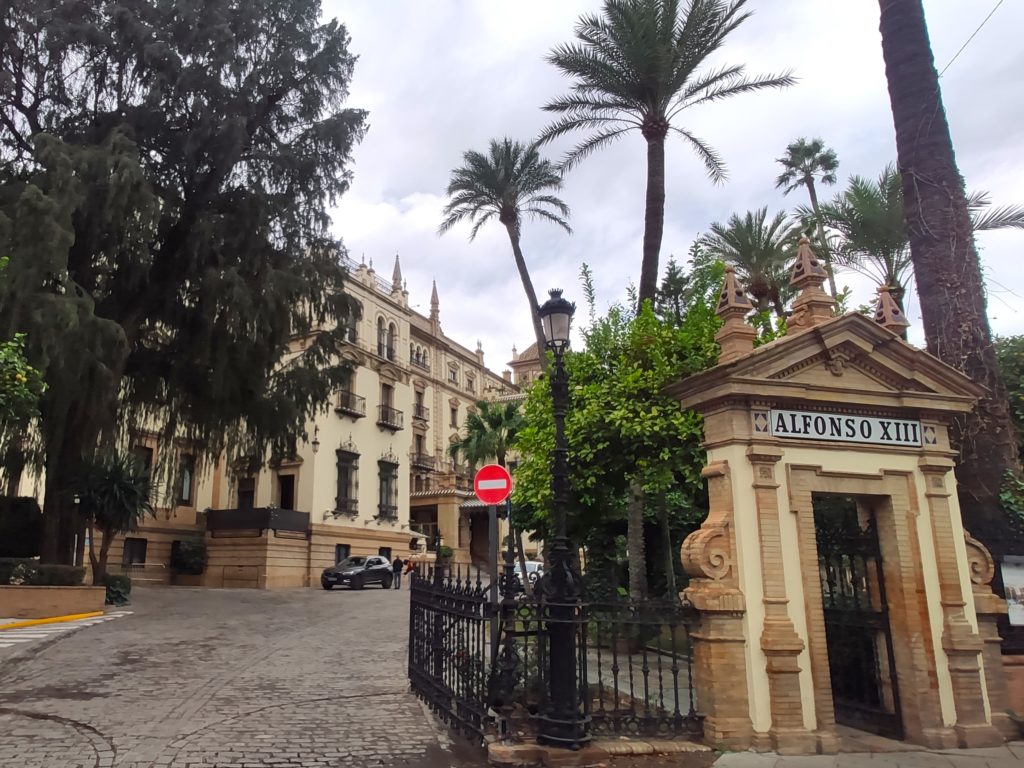
Have breakfast in Cafetería Plácido y Grata
Near the commercial street of the city and very close to the centre, Plácido y Grata is a hotel which also has a café opened to the public. If you are a coffee lover it is a must, with options of filtered and great coffee that you can accompany with cakes or savoury breakfast.
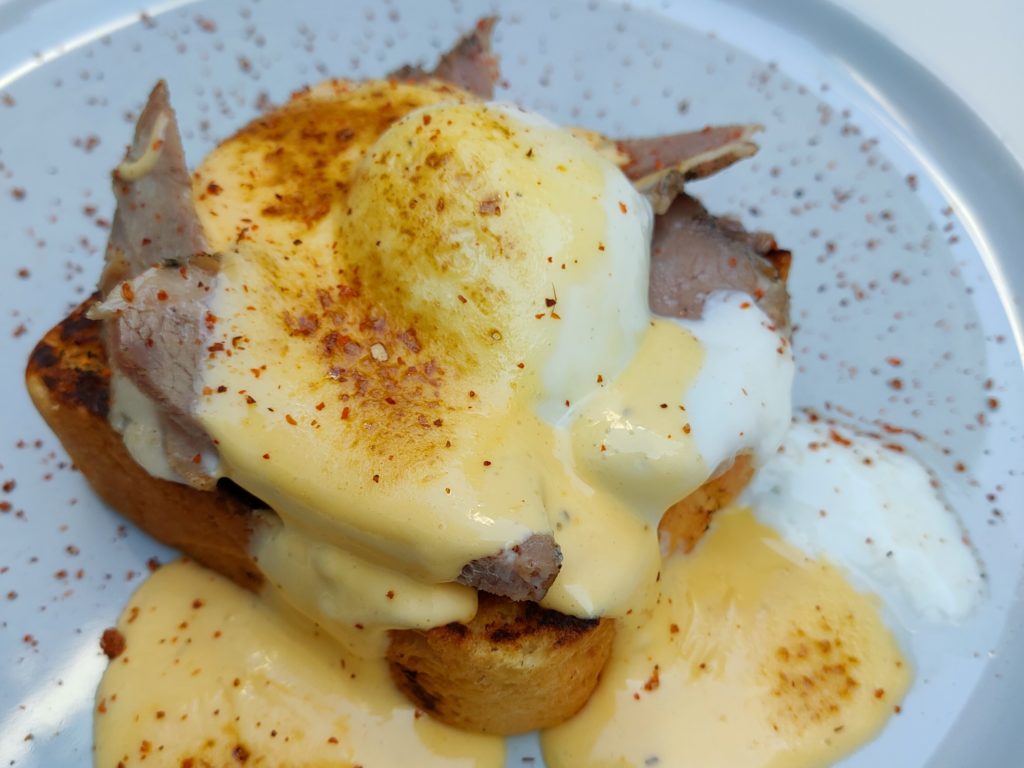
From 11am, when breakfast for the customers at the hotel has finished, you can access an interior terrace that is a blessing in hot summer days. From 7pm, this terrace is turned into a bar.
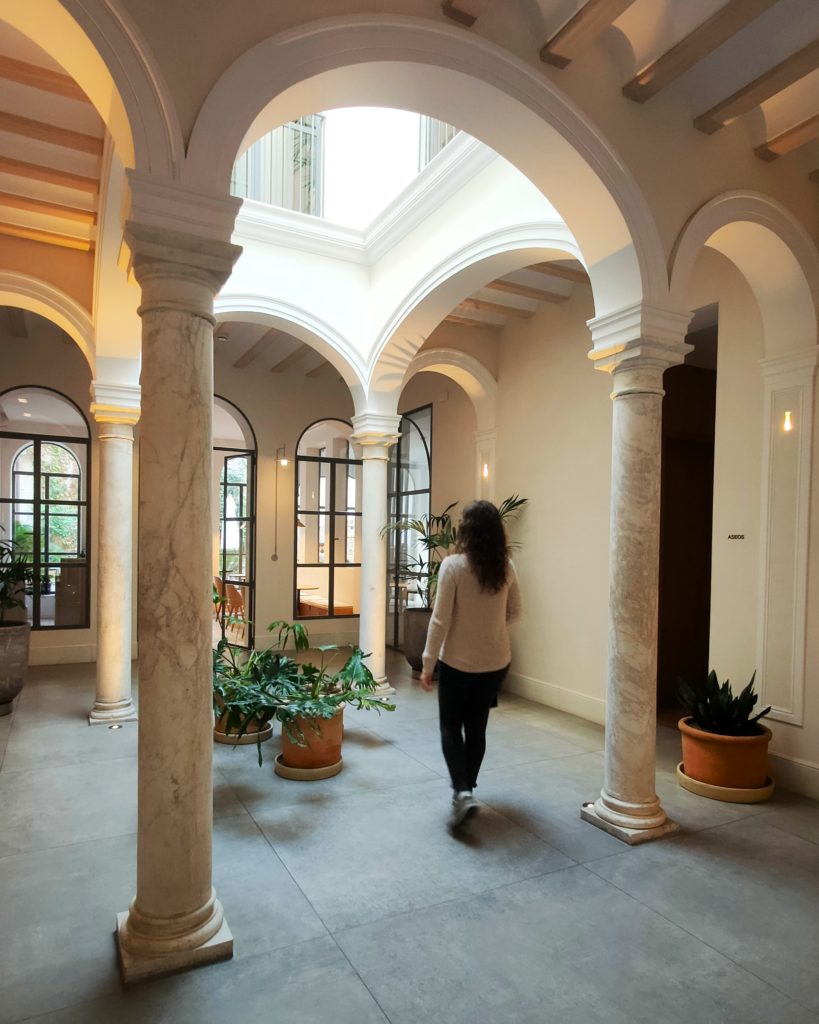
Taste La Cacharrería’s carrot cake
Near the viewpoint Las Setas, this café is a great spot to have breakfast or a sweet treat as it has one of the best carrot cakes in town.
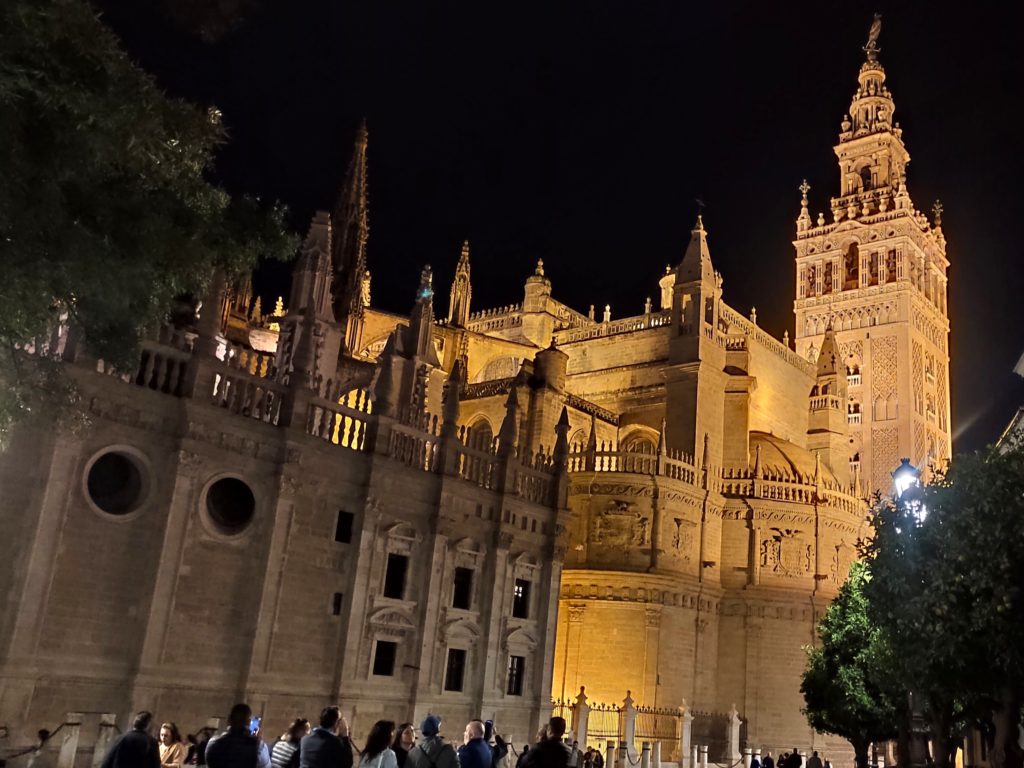
Was this post on what to do in Seville useful for you? Please let me know and feel free to ask any question in the comments section! You can also support my work and Buy Me A Coffe. I will be immensely happy 🙂
Do you have more time in Spain and want to explore other places in the country? Check these posts for inspiration!
